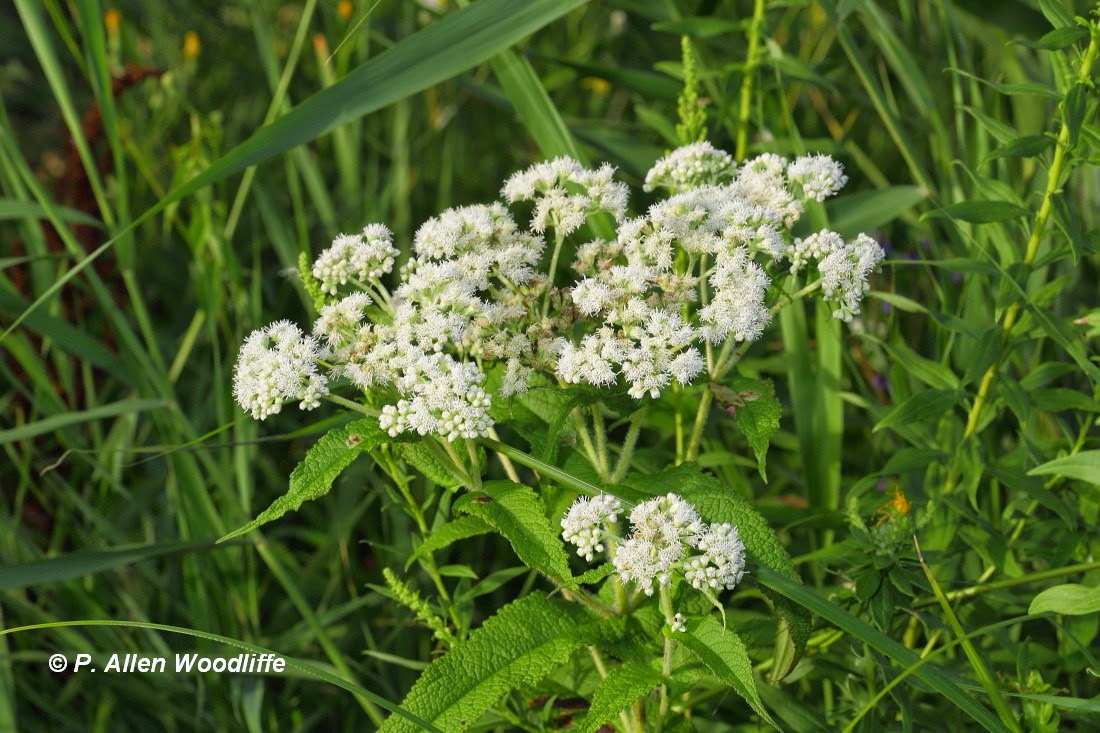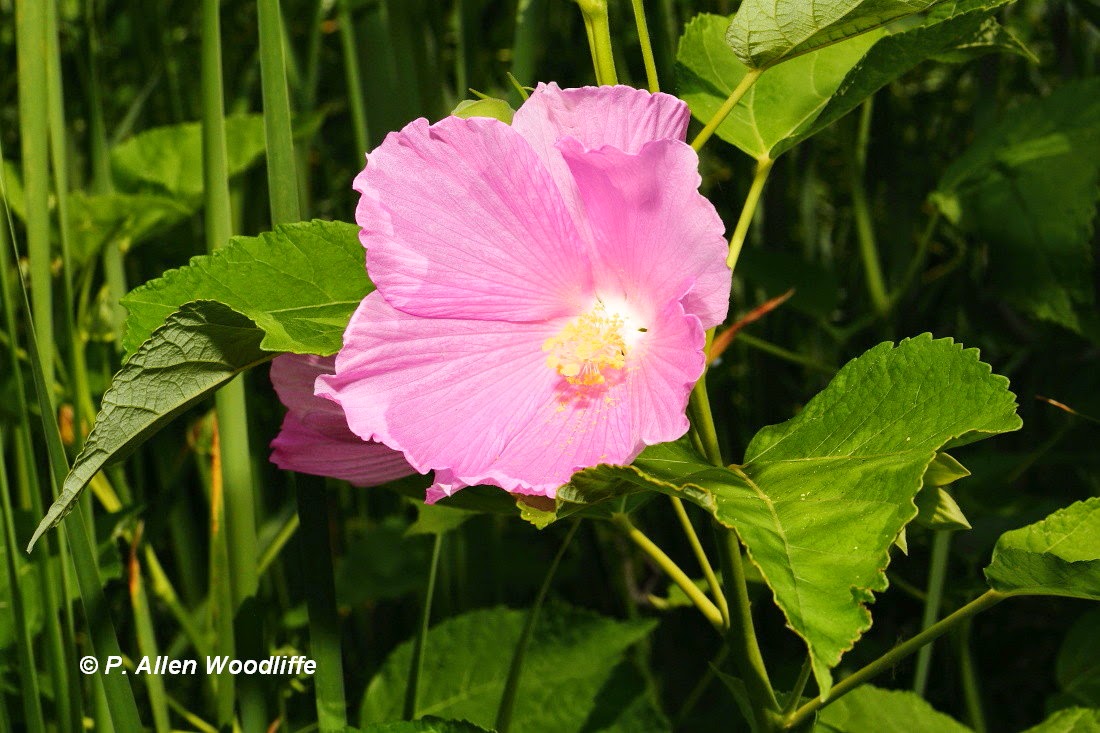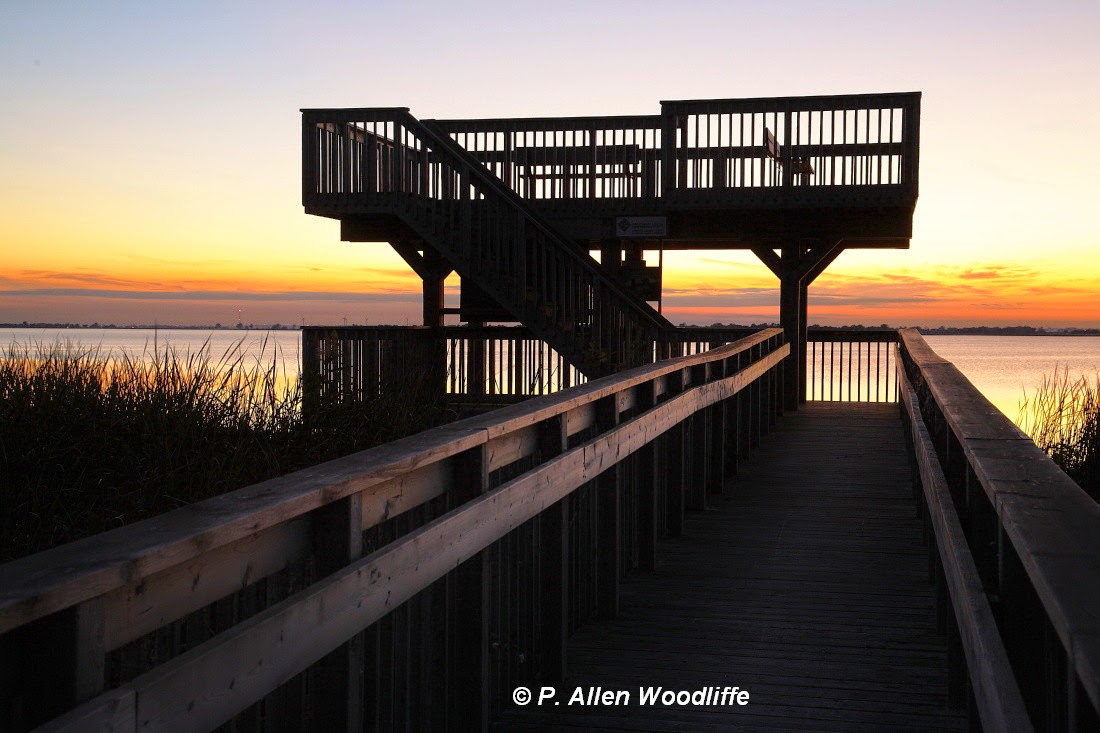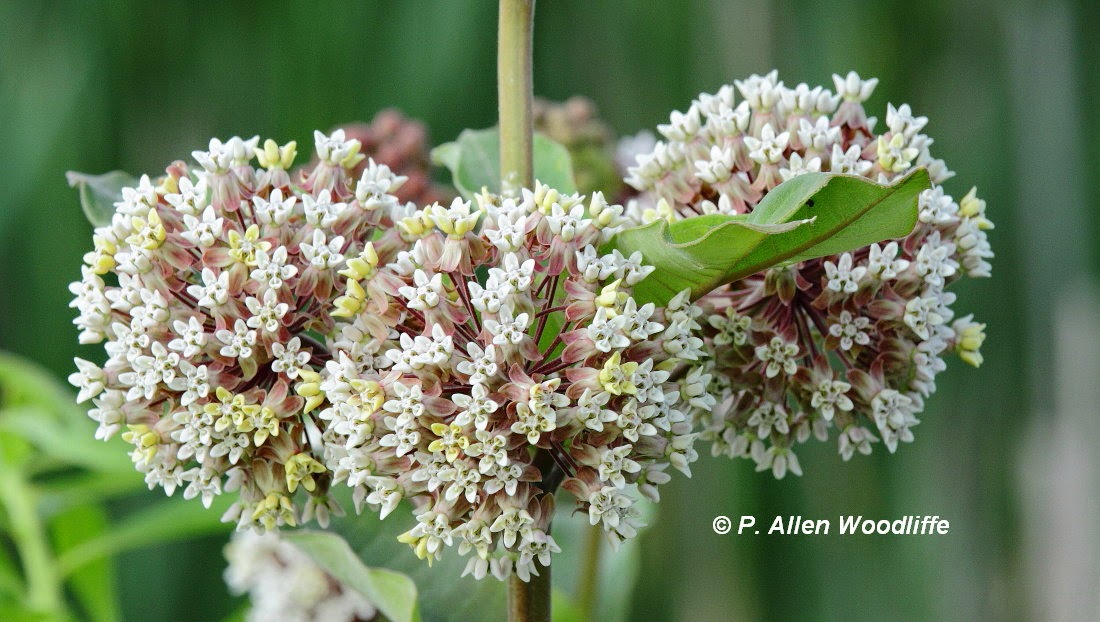Wetlands are generally hard to access without a kayak or canoe. Fortunately there are trails complete with observation platforms in some of the provincial parks and national wildlife areas of the region that provide excellent access and viewing opportunities.
This first photo is of the observation tower at Rondeau, and the photo that follows shows a marsh scene looking north from the tower.
St, Clair National Wildlife Area, along the shoreline of Lake St. Clair, also has a trail and tower.
A more basic, but still quite useful observation platform is present along the Angler Line to Mitchell's Bay trail.
Any of the trails leading to these towers pass through wetland areas that are full of attractive plants, some of which are illustrated below.
m.jpg) |
| Spotted Jewelweed (Impatiens capensis) |
This Spotted Jewelweed, a.k.a. Touch-me-not, looks like a small horn-of-plenty. It gets its a.k.a. name because the seed pods, when ripe, will explode when touched, which is an interesting mechanism for seed dispersal.
Another species is the Fringed Loosestrife (Lysimachia ciliata) named because of the fringed edges of the long-stalked leaves.
 |
| Fringed Loosestrife |
This next species is Giant Ragweed (Ambrosia trifida). It occurs in disturbed areas as well as along the edges of wetlands. It can be very tall, sometimes reaching 4-5 metres in height. Its greenish candelabra style of growth and branching reminds me of a book I had to read back in about Grade 10 English.....The Day of the Triffids, by John Wyndham. It was a sci-fi story about tall plants that could move on their own, and spit venom into people's eyes which caused blindness. The few illustrations in the book showed these weird plants having a distinct similarity in appearance to Giant Ragweed, too. At least that is what I recall....Grade 10 was a loooong time ago! And interestingly, the species part of the scientific name of Giant Ragweed is 'trifida' so I assume there must be some kind of connection, even if only in a sci-fi way. I think about that literary classic (?) often when I see this plant.
 |
| Giant Ragweed |
 |
| Hog Peanut |
 |
| Swamp Thistle |
Boneset (Eupatorium perforatum) is another one often found close by, along with Spotted Joe-pye-weed (Eupatorium maculatum).
 |
| Boneset |
 |
| Spotted Joe-pye-weed |
 |
| Pokeweed |
Some plants are covered with white flowers. The one that follows is Wild Cucumber (Echinosystis lobata).
 |
| Wild Cucumber |
Blue Vervain (Verbena hastata) is a less obvious species than most of the ones shown previously. It also blooms for a long period. Only a very few flowers are open at any one time, but there is a progression of them from bottom to top. In addition to wetland edges, it is found in wet prairies. Although the colour of this shows as purplish-pink, in reality is a little more blue. But for some reason photos of blue flowers typically show up with more pink than they actually have.
 |
| Blue Vervain |
 |
| Water-willow |
 |
| Swamp Rose Mallow |
This latter image was taken from the observation platform along the Erieau Rail Trail, looking out towards the village of Erieau.
Another plant is Wild Rice (Zizania aquatica), also seen here from the Erieau Rail Trail platform.
Wild Rice is quite abundant in lakes of northwestern Ontario, but the southern Ontario variety has declined considerably and is ranked as S3. It is greatly affected by water levels. It seems to do best when the water levels are high in the spring, which suppresses some of the vegetation, but drops almost to the point of exposed mudflats by mid summer. If that happens, it can be the dominant vegetation. The large drainage ditch along Erieau Road just north of the McGeachy Pond area is quite full of Wild Rice. This particular photo shows only a single plant, but is easily identified by its height and form. Wild Rice is a favourite of wildlife. Ducks love it, and if you come across a dense stand in late August when Soras are migrating, toss a pebble into the stand during an evening visit and you may hear a chorus of peeps. I have done that in a very large stand of it and on occasion estimated there were at least 100 Soras peeping back at me.
An obvious wetland plant is Cattail (Typha sp.) I use the 'sp.' to indicate that it is difficult to tell sometimes whether the species most common in this area is Wide-leaved or Narrow-leaved Cattail, and they often hybridize to the point where it is almost impossible to tell for most of the season. When it is in peak flower, there are slight differences in the flowers, but those characters only occur for a short time. It is believed that most of the cattail vegetation in southwestern Ontario is the hybrid type. Of course the brown cattail is quite identifiable as Typha.
 |
| Cattail |











































